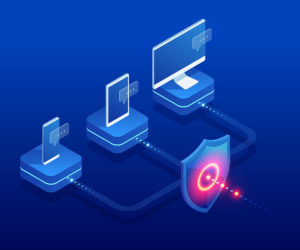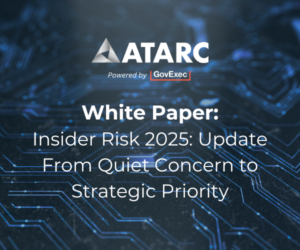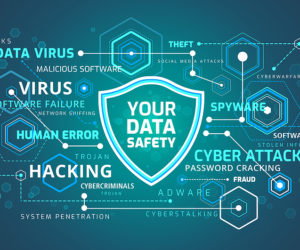
Sorry, your browser is not compatible with this application. Please use the latest version of Google Chrome, Mozilla Firefox, Microsoft Edge or Safari.
Risk Management / Regulatory content

Semiannual Risk Perspective
The Spring 2025 Semiannual Risk Perspective from the OCC highlights how rising interest rates, commercial real estate exposure, and cybersecurity threats are reshaping risk for national banks and federal savings…
Learn More


Cybersecurity: Implementation of the 2015...
Nearly a decade after its passage, the Cybersecurity Information Sharing Act of 2015 continues to play a pivotal role in how cyber threat data is exchanged across federal and nonfederal…
Learn More


Investments under Risk: Evidence from Hurricane...
How do companies respond when hurricanes hit their operations? This study shows that after major hurricane strikes, firms shift capital investment away from affected areas toward safer regions—especially after 1997,…
Learn More


Cybersecurity and Financial System Resilience...
The 2025 Cybersecurity Report outlines the growing complexity of cyber threats facing the U.S. financial system, highlighting vulnerabilities linked to third-party service providers and outdated legacy systems. It emphasizes the…
Learn More


China’s Military Diplomacy
As cyber threats increasingly target critical infrastructure, state governments are stepping up their cybersecurity readiness. This strategic plan outlines how a multi-state compact can help build capacity, share threat intelligence,…
Learn More


Privacy Impact Assessment for the Cybersecurity...
To safeguard the integrity of its technology ecosystem, DHS has implemented a comprehensive program to assess supply chain risks related to cybersecurity. This includes open-source research, vendor evaluations, and the…
Learn More


Iranian Cyber Actors May Target Vulnerable US...
Federal agencies are warning U.S. organizations—especially in critical infrastructure sectors—about increased cyber threat activity from Iranian-affiliated actors. These actors have been observed exploiting known software vulnerabilities, using default passwords, and…
Learn More


In-Space Servicing, Assembly, and Manufacturing
Amid mounting cybersecurity threats, federal agencies are ramping up efforts to implement Zero Trust security frameworks. This GAO report evaluates how 23 civilian agencies are progressing toward this goal, identifying…
Learn More


Insider Risk 2025 Update: From Quiet Concern to...
The Insider Risk Working Group met to discuss the evolving landscape of insider risk management within Federal agencies, the supporting defense industrial base (DIB), and commercial organizations. The discussion explored…
Learn More

How Blockchain Supports Key Government Priorities
Blockchain is transforming how government agencies approach transparency, efficiency, and security. By enabling real-time tracking of transactions and automating processes like tax collection and benefits distribution, blockchain can help build…
Learn More


Weapon Systems Annual Assessment
GAO’s latest assessment finds the Department of Defense continues to fall short on delivering advanced weapon systems quickly and cost-effectively. Many programs using acquisition pathways designed for speed instead suffered…
Learn More


The Digital Immune System: How AI Can Outpace...
Cyber threats now move faster than human response, prompting a shift toward AI-powered “digital immune systems” that mirror the human body’s ability to detect and neutralize threats autonomously. This approach…
Learn More

Protecting Critical Infrastructure Through...
This report explores how criminal prosecution can be a powerful tool for protecting U.S. critical infrastructure against cyber and physical threats. Using the example of the Flax Typhoon botnet takedown,…
Learn More


Artificial Intelligence in the Fire Service
As artificial intelligence continues to transform public safety, the fire service stands to gain powerful new tools—but only if AI is implemented responsibly. This NIST publication explores how AI can…
Learn More


Metrics and Methodology for Hardware Security...
Despite hardware’s reputation for being secure, this NIST paper reveals how flaws introduced during design or manufacturing can lead to serious vulnerabilities. It introduces a scalable methodology for mapping hardware…
Learn More


